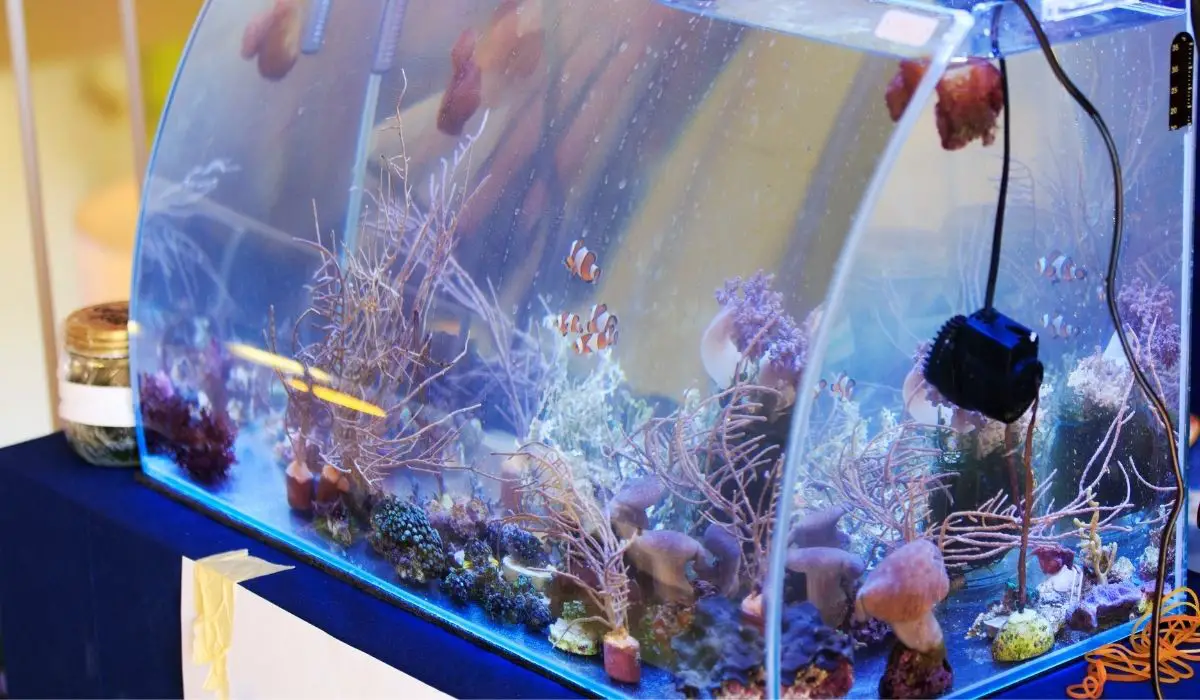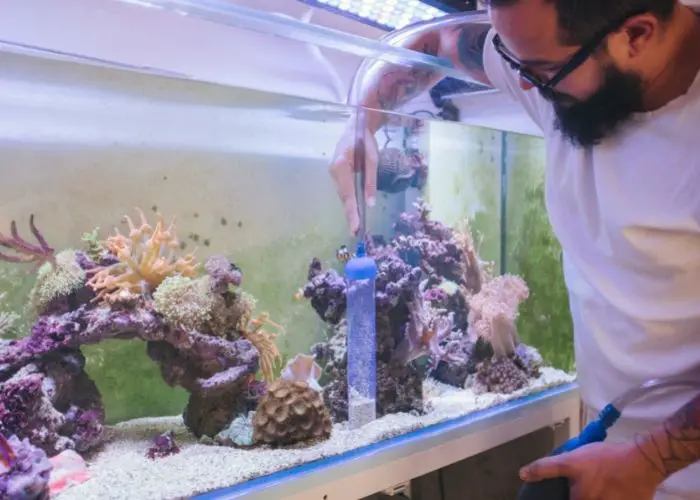Last Updated on January 13, 2022 by admins
If you love tropical fish and plants, you probably are interested in having a saltwater tank. We have created the best guide on how to determine saltwater aquarium salinity levels and how to operate a saltwater fish tank successfully.
When you have a saltwater tank, it is up to you to add the salt into the water. This means you have to carefully measure and add it into your freshwater. Unfortunately, this is where many aquarium owners make mistakes.
If you do not measure and control the exact amount, things can get out of control quickly. Saltwater fish and plants rely on certain saltwater aquarium salinity levels in order to perform key functions for their survival. As their owner, it is your responsibility to keep a good environment for them.
Do not fear or be intimidated! We have created the number one guide on managing the saltwater aquarium salinity level in your tank. Keep reading to become an expert!
Finding Your Ideal Salinity for Saltwater Tank
The most important reminder we will start with is, do not ignore the salinity levels of your tank! It is much more important than you think. Owners who neglect their salinity levels regret it later.
The salt level of your water depends on which type of fish and plants you want to raise. If you are raising freshwater fish, it means you will use no salt. Sometimes people want to grow special fish that live in brackish water.
Brackish water is when some salt is mixed into freshwater. Please note, this is not the same as salt water.
In nature, brackish water is found in channels where ocean water blends with the river. Certain species like mudskippers and archerfish can be found here. Brackish water is considered to contain 0.5-30 parts per thousand of salt in it.
According to the University of Hawaii, “Salinity can be expressed in units of parts per thousand, ppt, which is equivalent to how many grams of salt are in 1,000 grams (g) of water.” The water you find in the ocean is usually around 35 PPT.
This is a good starting point if you want to raise seawater fish.
Ocean water is not only salt. It contains other things such as chloride, potassium, sulfate, and magnesium. The nice thing is that when the concentration of these other elements changes, it does not impact the salinity of saltwater tanks.
Water salinity is measured by how much salt is dissolved into the water. If you put too much salt into water, it becomes oversaturated. This is unsafe for fish and plants to survive in.
At that point, you are able to physically see salt particles accumulating at the bottom of the water.
Read more about Saltwater Aquarium Sumps: This Is Everything You Need To Know!
Creating The Perfect Reef Tank Salinity
As mentioned before, a good salinity level to stay around is 35PPT. In order to create this type of water follow the steps outlined here.
First, weigh 35 grams of salt out. When we say salt, we are not talking about any regular salt. You may know that there are many different kinds of salts that humans consume.
This can be table salt, Himalayan rock salt, sea salt, and kosher salt. All of the salts are considered to be Sodium Chloride (NaCl). However, these salts will not be suitable for your saltwater aquarium salinity level.
This is because as mentioned before, ocean water contains other components aside from just pure Sodium Chloride. You need to buy a special mix that simulates seawater.
Most pet stores and aquarium stores will sell this. Purchasing this product will make your saltwater aquarium dreams easier. Make sure you measure 35 grams of this salt out and mix it into your water before putting your fish in.
You can use special tools to measure the amount of salt in your water. This should be checked on a weekly basis. Weekly monitoring will help prevent larger problems from forming.
One tool that will help you measure salinity levels is called a hydrometer. There are two main types of hydrometers available. One is called the box hydrometer, and the other is a floating glass hydrometer.
You need to submerge the hydrometer into your water to get a reading. Please note, that if your hydrometer is not completely cleaned before use, the numbers could be inaccurate. One problem people face is if their hydrometer had some existing salt particles on it before taking their measurement.
If you want the most accurate reading, go with a floating glass hydrometer. These float in the water-based on the salinity level.
Final Considerations On Salinity For Saltwater Tank
As always with your tank system, come up with a design beforehand. One thing to consider for a saltwater tank is whether you want to raise fish alone or if you want to have fish and plants.
This decision will affect the saltwater aquarium salinity levels necessary. With a fish-only tank, you can actually keep the salinity levels slightly lower.
When you change your saltwater, make sure to monitor the levels for a few days after to ensure no mistakes are made. Some people use a machine called an Automatic Top Off System (ATO). This machine automatically adds salt into your water every week.
If you choose to go this route, be careful to monitor your salinity levels still. Sometimes, the machine could not be working properly and risk the health of your whole tank. It’s important for you to personally keep track of the levels to ensure the greatest success.
In a saltwater tank, when there is evaporation, the salinity level goes up because freshwater leaves the tank into the air. This is also really important to pay attention to.
Sometimes the salinity level will increase because of this. In this case, add more freshwater based on your salinity readings.
Having a tropical fish tank is an exciting task. Just make sure you pay careful attention to the saltwater aquarium salinity level, and you will be fine.
Feel free to comment and ask questions below!
Learn more about How To Start A Saltwater Aquarium: Step By Step


